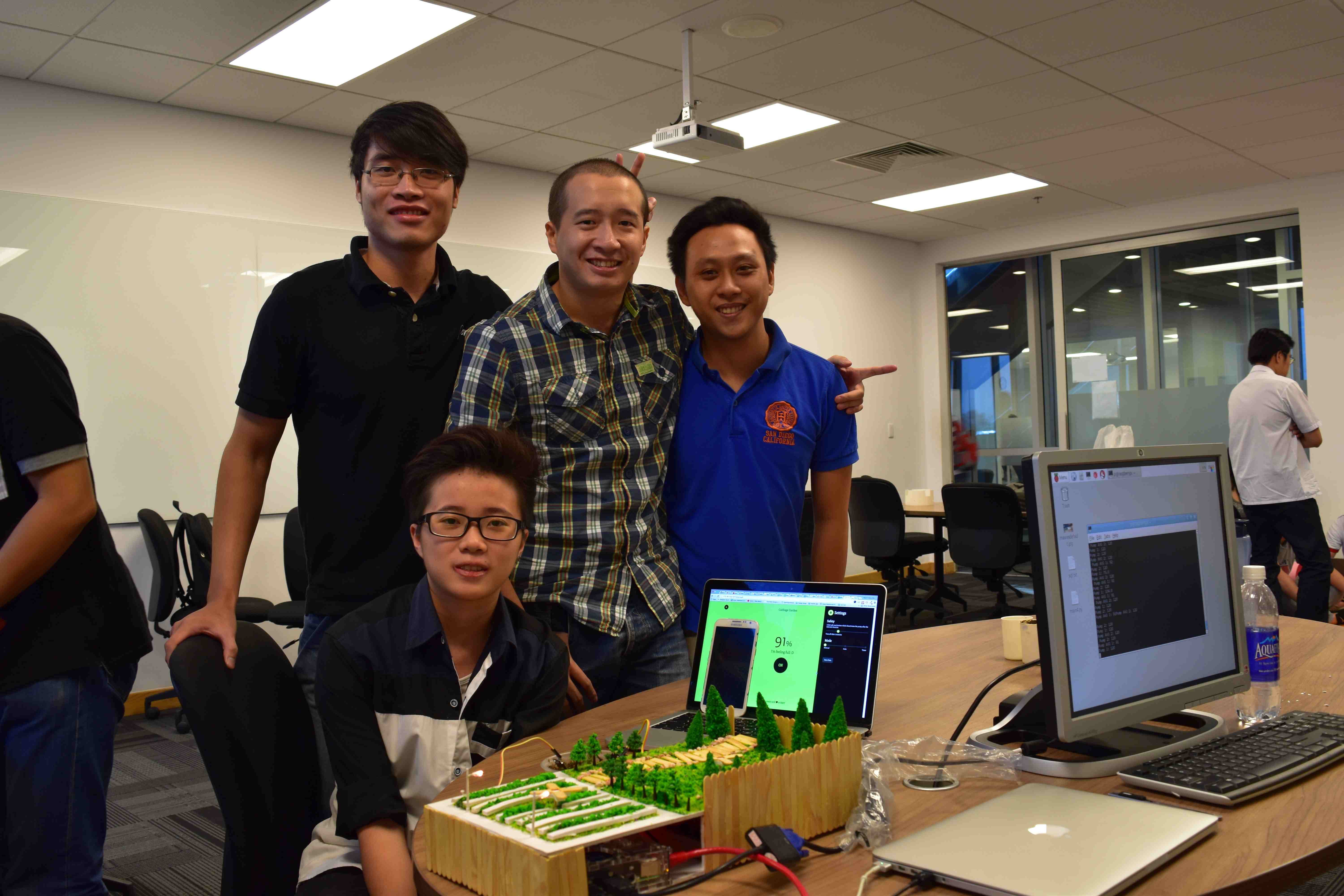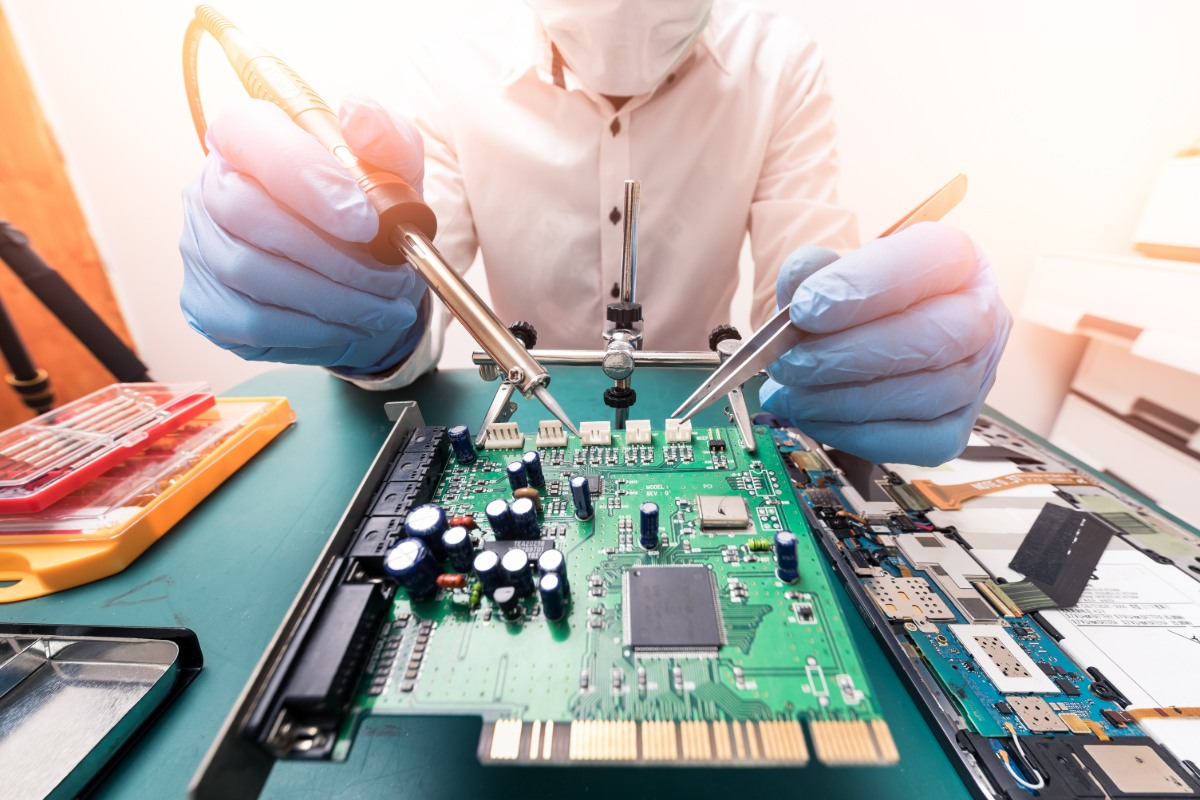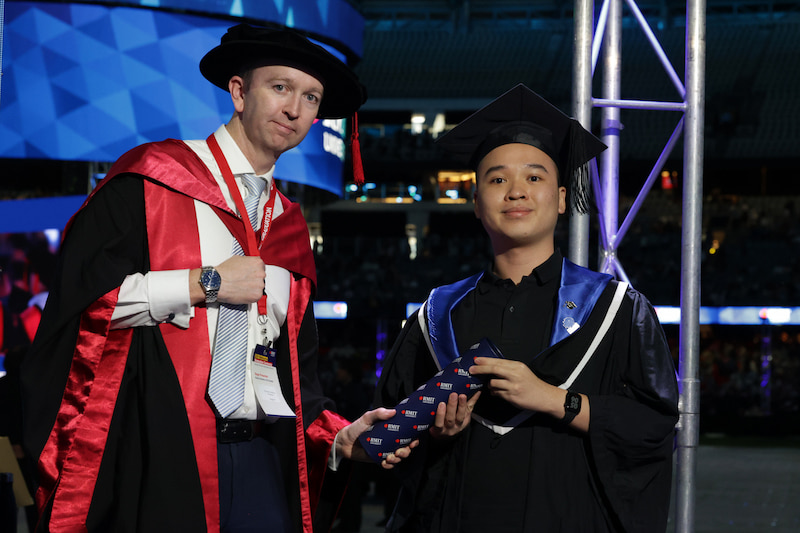From their project proposal:
“The Automated Irrigation System allows users to water their plants from anywhere with an internet connection using a smartphone or web browser. Owners simply set up the pump mechanism and moisture sensor as per the diagram and connect it to a preconfigured Raspberry Pi.”
Supervising Lecturer from the Centre of Technology Ms Anna Felipe explained what a Raspberry Pi is.
“A Raspberry Pi is a small computer, a single board, micro-controller that can control hardware,” Anna explained.
“In this case, using Python as the programming language, it can control the moisture sensor and also the motor.
“The moisture sensor detects whether the soil has a prescribed level of moisture in it, and if it is below that threshold, the Raspberry Pi will turn on the water pump’s motor to water the plants.
“At the same time, it sends this information to the mobile app and the web app.”
According to Anna the process can be done automatically or manually, which is very handy for extended trips away, especially when you consider seasonal weather conditions in Vietnam.
Still in its prototype stage, the applications for the system are obvious, with commercial possibilities huge.
Given the task of devising a solution to modern life involving the Internet of Things – the connectivity of physical objects, vehicles, buildings and other items able to exchange data via the Internet – the students spent time to come up with this project. Surprisingly, given the simplicity and practicality of the idea, there’s not much existing competition for it.
Anna said her job was simply to introduce the hardware to the students since they already have the experience in developing software applications. When putting the problem to the team, she provided them the basic tools to move forward and asked them to remain focused on the positives: “How can we improve this? Or, how can we overcome this?”
The group spent two weeks to conduct research and ten weeks on project implementation.
All four students are currently undertaking internships as part of their RMIT Vietnam course work.
Attend the Technlogy Experience Day on Sunday 16 October to see more creative and innovative work by RMIT Vietnam students.
Story: Jon Aspin





